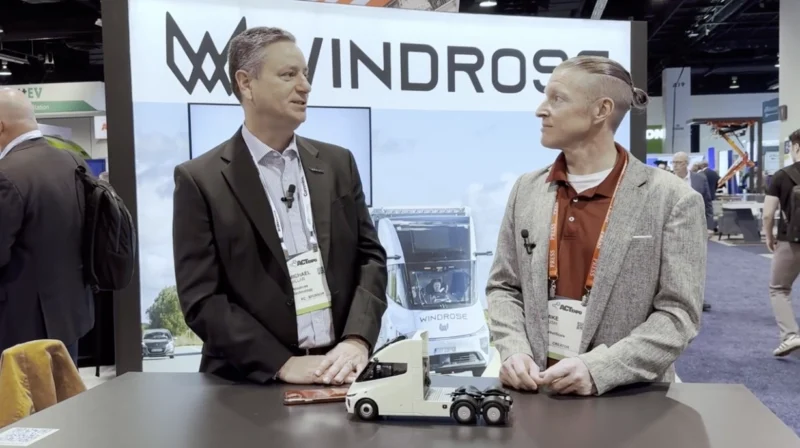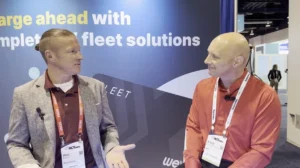Autonomous Delivery Robots May Be Both Friend and Foe to Gig Work Delivery Drivers
The rise of autonomous delivery robots is shaping the way urbanites receive their meals in the world of food delivery. Serve Robotics, an Uber spinout, is amplifying its collaboration with Uber Eats by deploying up to 2,000 autonomous sidewalk delivery robots across several U.S. markets through 2026. Initiated in West Hollywood, Serve’s robot deliveries have surged, with over 200 restaurants participating and a monthly growth rate of over 30%.
While critics express concerns about the potential for job displacement, proponents highlight the efficiency and practicality of these autonomous delivery robots, particularly in bustling cities. But which one is it? Will these Level 4 autonomous robots function as links between restaurants and drivers to make their jobs easier, or will they just put a dent in the number of delivery driver jobs? For insight into this transformative approach, Sergio Avedian, Senior Contributor at The Rideshare Guy, offers a driver’s perspective on how these robots will impact densely populated cities after sitting down with the CEO of Serve Robotics for an interview on his podcast.
Sergio’s Thoughts:
“Today, I had the pleasure of interviewing Ali Kashani, the CEO of Serve Robotics, which is in partnership with Uber with about a couple hundred delivery robots at the moment, but the new agreement calls for up to two thousand robots to be deployed all over the place. Basically, I have already seen them at Hollywood, Los Angeles, and in densely populated areas I think these robots have a valid place. To be perfectly honest, because as a delivery driver myself, I am a cherry picker, and I’m not going to do two-dollar orders with wear and tear on my car and putting gas at five dollars and fifty cents a gallon.
As during an interview, a couple of things Ali said that made quite a bit of sense to me that these robots are basically going to serve even help the drivers to a point as opposed to eliminate their jobs that everybody’s concerned about to compliment actually drivers. To, let’s say, a lot of these robots would be a conduit between the restaurants and the drivers who may be parked in a parking lot, bring them from the restaurants that are in locations with tough parking to, you know, put them in their car and deliver two or three or four orders at a time with increased earnings possibilities.
I see these robots as conducive to being more efficient. I mean, there is no doubt about it. Right? Ali Kashani during the interview mentioned that why should a two-pound burrito get driven by a two-ton machine, which I completely agree. In densely populated areas, I think these robots have a place. They only travel at three miles an hour. At the moment, they’re only doing single orders.
This also will call for the consumer to change their habits a little bit, because the consumers during the pandemic and after the pandemic are so used to somebody bringing them the food and leaving it at their door. Now, actually, they have to get off the couch.
They have to open the top of the robot and have to get out of the house to receive the food that was sent by the restaurant. This also stops a lot of fraud, actually, on the consumer’s part because a consumer actually can get a driver fired, a human driver fired, by complaining to DoorDash or Uber Eats or Grubhub that they never received their food, although they did receive the food. And we have a lot of examples of these videos on TikTok and social media. So, this will eliminate that because the robot did not steal the food. The robot delivered the food, and the only mistake now is on the restaurant.
They probably prepped the food incorrectly. That eliminates as well. I think these robots will do great in densely populated areas such as downtown Los Angeles where I’m at, where parking is absolutely bonkers. Right?
I mean, you go in front of a restaurant. How many tickets will probably the driver get trying to park? Or accidents?
And then there are a lot of high rises with multiple buoying units, you know, then they hit the park again. I mean, you know, that kills time. That kills gas. That kills a lot of time. That puts a lot of wear and tear on the car. So, in densely populated areas, I think these last mile delivery robots are going to be fantastic. Is it going to phase out or is it going to eliminate drivers? Potentially.
You know, we’ve had these in the history in the history of our country.
You know, as Ali said, you know, they may actually get replaced with better paying jobs such as these robots have to get maintained. They have get cleaned. So time will tell on that one. I’m kind of a skeptic.
I definitely think it’s going to eliminate some jobs in, again, densely populated areas such as New York City or LA Downtown or a lot of downtowns because a lot of couriers use e-bikes and e-scooters, And, you know, they may lose some orders. But, hey, if these robots are just going to do two-dollar base pay trash orders from DoorDash and Uber Eat, all power to it. And they will also open the markets for new consumers. So, I don’t see it as a panic situation at the moment. I think, they have a place and a time and invested populated areas. I think they have a point of actually helping the couriers than herding couriers.”








